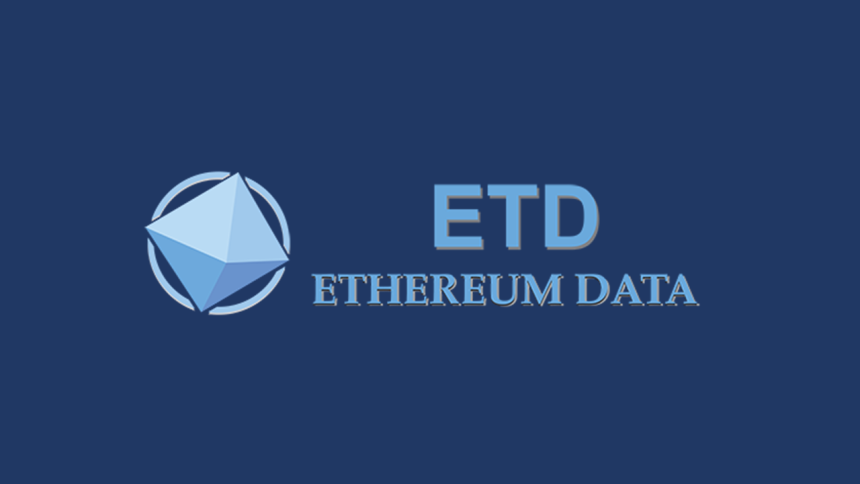As the global industry moves towards a cleaner and environmentally friendlier direction to reduce carbon footprint, first-generation blockchains’ proof-of-work consensus mechanism, such as bitcoin mining, gives way to greener consensus algorithms and mining efforts. Long expected migration of Ethereum’s PoW 1.0 to PoS 2.0 generated much hope in the blockchain community in saving energy with greener consensus mining algorithms. Among the many efforts in bringing Ethereum’s worldwide computing platform to the mass user base, Ethereum Data project, which aims at aligning ecological sustainability with scientific development, is gradually gaining momentum in the mining industry as well as the scientific community.
ETD inherits the smart contract capabilities of Ethereum 1.0 with a new public chain consensus system addressing several industry pain points such as energy waste and computational efficiency. It provides new solutions for companies and application developers based on public chain technology, allowing them to design and develop system applications that serve the real economy.
It follows the industry trend of integrating industrial applications, talent training, open-source systems, incubation accelerators, and so on, enabling blockchain systems to be easier, cheaper, and more flexible in application module selection.
What is Ethereum Data?
ETD (Ethereum Data) is a decentralized general-purpose computer system built on the tech stack of:
- Ethereum smart contracts
- DSB (Disk Storage Banking) distributed sharing storage solution.
- Distributed computing technologies which collect distributed computing resources to contribute to the public computing platform such as Berkeley Open Infrastructure for Network Computing (BOINC).
With a unique privacy-preserving distributed resource sharing consensus protocol, the architecture is a convenient, high-performance blockchain network. This seeks to realize the flexible expansion of dispersed applications to satisfy the performance standards of:
- research project institutions
- storage
- computing requirements for web applications
- economic requirements for web applications
The Consensus Mechanism
The Proof of Computation-Storage consensus technique, which combines Proof of Computation (PoC) with Proof of Existence (PoE) is used by ETD. It is a generally distributed computing platform whose goal is to optimize the use of core resources, including:
- distributed computing models
- distributed storage models
- P2P peer-to-peer logical network communication (bandwidth) model
- two-way data privacy protection requirements
The procedure of privacy-preserving computation is fundamental to achieving universal private cryptographic biometric (PCB) data matching. PCB consensus is essentially a proof of work (pairing is obtained/discovered by privacy-preserving computations). Computations need data and network capacity to send the data unless all of the data is stored in the local node.
As a result, providing data resources is just as crucial as providing calculation workload (PoC). The PCB data storage uses the Proof-of-Existence technique to assure the safety of the data source of the double-blind matching process.
The paired data can be supplied by the node (PoE), or the local or other nodes can supply the data fragments, and the needed PCB data (combined PoC and PoE) can be acquired by computation. Encrypted biometric PCBs can get PoE evidence without decrypting all encrypted data.
The Ecological Construction of ETD Network
The ETD public chain system addresses the industry’s pain points and connects to other communities to give complete support for the industry’s demands. ETD is dedicated to expediting the adoption of blockchain applications while also encouraging high-quality growth in traditional sectors. ETD will combine high-tech science and technology such as:
- artificial intelligence
- big data
- virtual reality
- Robotics
- Internet of Things
- cloud services
This has a variety of applications in intelligent manufacturing, health care, transportation, intellectual property protection, new energy vehicles, organic agriculture, distributed energy, food, commerce, finance, and other fields.
The ETD foundation utilizes these technologies to offer a strong blockchain infrastructure for various application scenarios and assist companies in migrating to the blockchain. The companies can integrate blockchain technology and industrial applications to increase efficiency and save operating costs.
The ETD public chain uses the new blockchain architecture and is set as an efficient, high-performing blockchain platform. This is done to achieve performance expansion of distributed apps to suit real-world demands.
One of the hurdles impeding industrial adoption of blockchain technology, particularly public blockchain, is the expensive R&D and application development. By offering reliable and efficient infrastructure, standardized and modular application plug-ins, and fully equipped technological and business model consulting, the ETD public chain enables companies to create a variety of apps and services based on the ETD ecological network.
ETD’s Collaboration with Scientific Institutions
The ETD Foundation intends to collaborate with universities and their affiliated scientific research institutions around the world to establish ETD General-Purpose Computing Labs. Here, ETD machines and a full node of blockchain will be allocated to allow research groups who cannot afford expensive supercomputers to connect to the ETD platform through the node to obtain computing and storage resources.
The computational power of the labs will be shared. The tokens earned will be instantly deposited into the Lab’s processing power pool for future R&D operations and the commercialization of related technologies and innovations.
ETD modular tools enable labs to quickly turn their innovations into user-friendly web apps that serve the broader population. Scientists no longer have to incur the costs of employing software developers, marketing employees, and finance professionals to commercialize their research and receive benefits commensurate with their labor.
Simultaneously, collected user data can help scientists continuously improve and optimize their research work. This means that if a research team requires a large amount of data/volunteers (for example, natural language processing, medical, historical, and social science subjects, etc.), they can pay ETD tokens to collect data or recruit volunteers from around the world. Volunteers do not need to be concerned about the potential leakage of their data because ETD has extremely excellent privacy protection and anonymity features.
ETD’s technical architecture integrates computation and data storage functions at a lower cost and with greater efficiency. It has a more comprehensive mechanism for user privacy protection and authentication protocols.
Moreover, the Ethereum-based smart contract system is more suitable for highly diverse computing needs, allowing it to develop a decentralized, resource-sharing, self-organizing ecological network.
About us: www.etd.inc
Contact: media@etd.inc





















